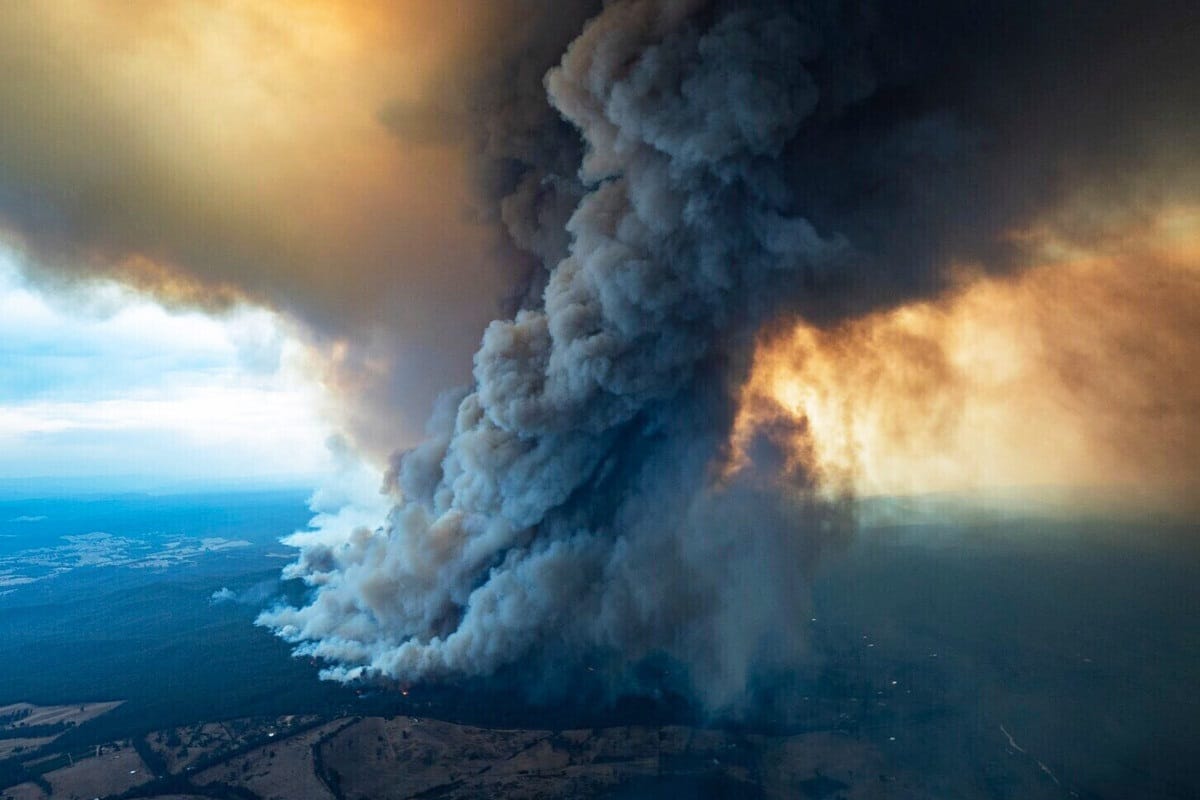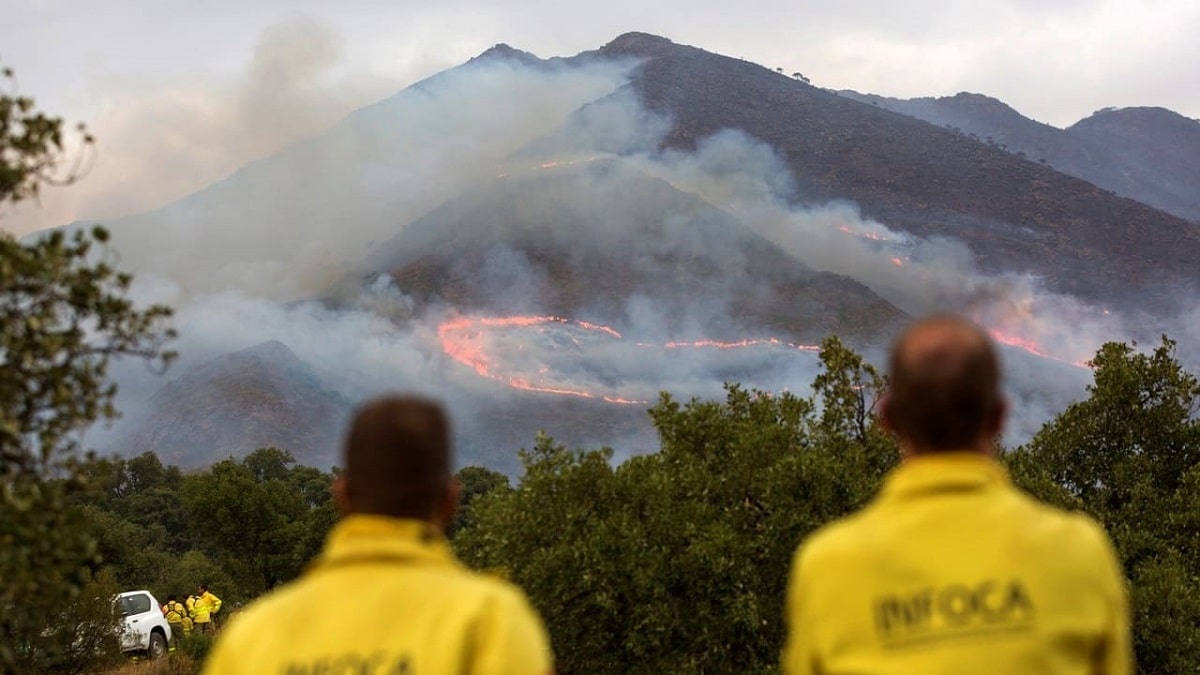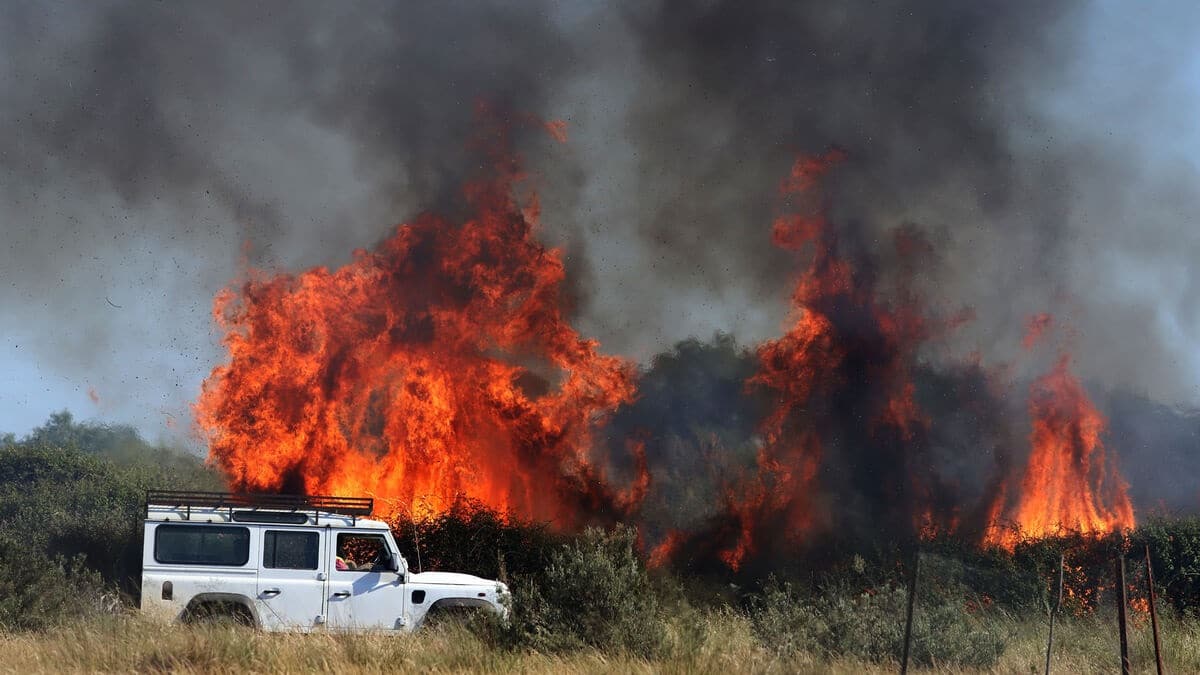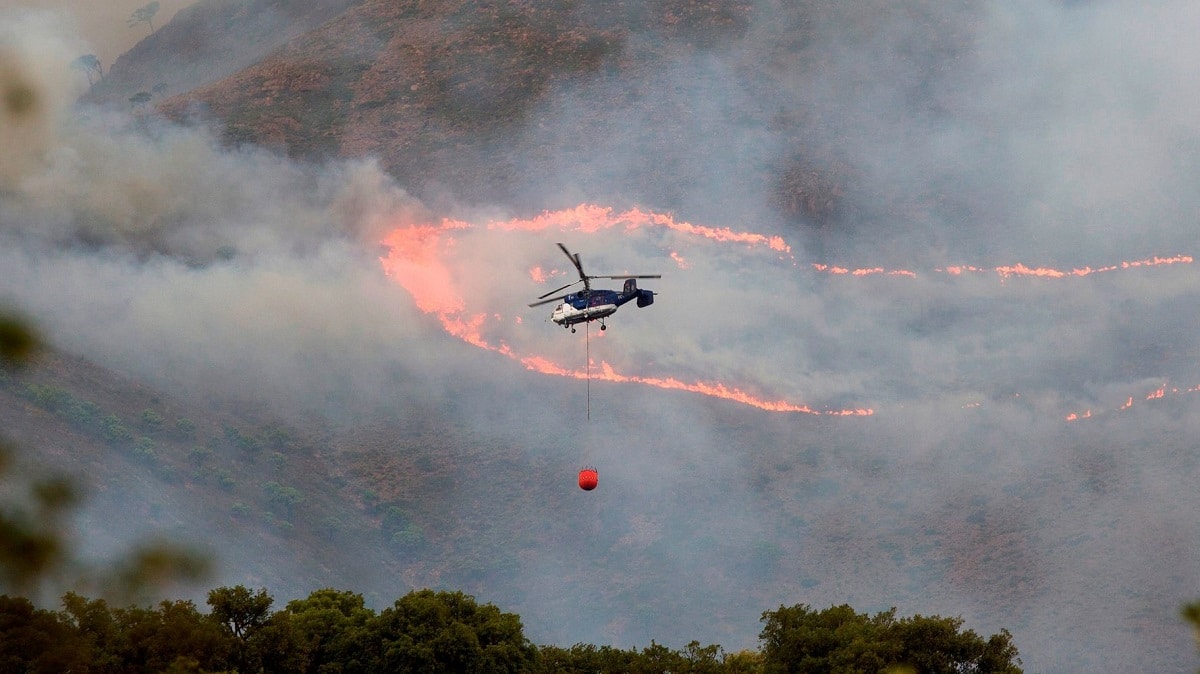
The presence of urbanization and population in the forests, together with the abandonment of forest management and climate change, is key to understanding what happened in Malaga, in Sierra Bermeja, an area of high natural value that burned for days. This already happened in Spain in the 90s. And it is key, to understand the next fires, we talk about the concept « Window to the future«.
Here we explain what is a sixth generation fire, and some examples.
sixth generation fire

The Sierra Bermeja fire, in the province of Malaga, is unique in the context in which it occurred. There have been so-called sixth generation fires, like this one in Spain, but the proximity of towns and urbanization means that, combined with the abandonment of the management of the natural environment and the impact of climate change, it has become an unusual fire.
The concept of fire generation is related to the relationship between fire behavior and landscape structure. Two issues that interact in forest fires, depending on the context, lead us to speak of one type of fire or another.
What does the sixth generation fire mean?

Since the middle of the XNUMXth century, with the rural exodus and the abandonment of agricultural use, fire has evolved. But, What are the first five generations? We will explain it to you below:
- First generation: fire picks up speed in uncultivated agricultural areas.
- Second generation: Then, the abandonment of the growing forest, which is a consequence of the above.
- Third generation: the landscape dichotomy: urban areas with a high concentration of metropolitan areas, on the other hand, empty countryside. In fact, there is a correlation that depending on the size of the forest, so will the fire be.
- Fourth generation: they are very dangerous, we have had them in Spain for many years, no less than in 1994, hardly anyone talks about them. Urbanization and chalets in the middle of the countryside
- Fifth generation: The so-called fifth generation starts production in California, in Australia, in already polluted territories, urbanistically speaking, such as the Canary Islands or Valencia, where forests are no longer distinguishable from urbanization. They are territories of large homogeneous hectares. And then there is climate change, where the atmosphere behaves very unstable, and you can't control that fire. And also, the population that lives near these fires. It becomes a matter of civil protection rather than forest management.
If there is something that fourth and fifth generation fires share, it is a determining factor such as the type of development of forested areas “without perimeter” that began to be built in the 90s. These are fires Forest Urban Interface.
The sixth generation fire: An entity that has a life of its own?

And, at this point, we are going to talk about what the sixth generation fire means. This is a new generation of forest fires that have already occurred on the peninsula for 25 years. Especially in Catalonia, the Solsonès region and parts of Bages and La Segarra. This is a new reality that must be taken into account, as happened in Sierra Bermeja in Malaga, the increase in the number of houses and buildings in wooded areas is a common factor in all these fires.
In addition, as the temperature rises, the climate changes. The abandonment of forest management is the third factor that makes fire, which is a natural presence in the ecosystem, irreversible and only calms down in favorable weather conditions.
In a fire of these characteristics, not only extinguishing capacity is lost, the height of the flames is more than 3 meters, the temperature is unacceptable, and the plane is no longer useful here, the only thing that can be done is firebreaks, and burn fuel to put up barriers so that when it arrives there is nothing to burn.
It becomes a battle, when a region reaches the sixth generation of fire, it seems that the fire has just become an entity with a soul. At this point, the fire develops its own atmosphere. At that time, the fire creates what we call a convective process, and no matter the wind, the topography or the vegetation. It is a cyclone and it will develop a convective process, which will create what is called pyrocumulus clouds.
The great danger of the sixth generation fire
If the pyrocumulus hits "ceiling", that is, the stable part of the atmosphere, it could become an explosive fire, and start to rain fire. This is what happened in California, and it is very dangerous. Unfortunately, you can't fight sixth generation fires. The only thing you can do is develop a defensive strategy, try to prioritize and defend what is most important.
Fire cannot be controlled. The only thing that can be done is to try to direct it where it can do the least damage, and wait for the weather conditions to change, because only then can the fire be put out. The sixth generation is very closely related to the abandonment of management and climate change.
Where does the concept of sixth generation fires come from?

The generations model was proposed to explain the evolution of fires since the 60s, when transformations began to emerge in rural environments, and fires began to be more complex and intense. Other elements have been taken into account, such as built-up areas that are second homes, urbanizations or even towns, which make the circumstances more complex. These are factors that make it difficult to extinguish the fire.
Examples of sixth generation fires:
- Pedrogão (Portugal), in 2017.
- Las Peñuelas, Doñana (Huelva), in 2017.
- Catalonia, in the 90s.
- Sierra Bermeja (Malaga), in 2021.
These cases will help to make mathematical models that help predict what the fires will be like in 25 years. The key to all this is in the union of the forest and the city, that is, the forest density is wrapped up with more buildings, and this makes the extinction work much more complicated.
In addition, It is not only about dealing with the extinction of the fire, but also, it is necessary to take care of evacuating and protecting urbanizations and the towns adjoining the burned area.
How to avoid sixth generation fires?

Since today there are more and more urban areas close to forest masses, and that we can no longer "deconstruct". Prevention measures would be:
- Create a more diverse landscape. That is to say, not to use reforestation only of pine forests, but to include other native species that more closely simulate natural succession. By this we mean including shrubby species typical of the place, for example, in the case of Andalusia, lavender, rosemary, jarales, broom, among others.
- Avoid that the urban area is included or continuous with the forest mass. This is avoided by making firebreaks, that is, areas that do not contain vegetation and that limit the areas, so that the fire does not have fuel.
- Enable areas for emergency services. Despite the fact that impact assessments currently state that there must be easy access to emergency services (fire trucks, ambulances), access is not always good. In fact, this has been one of the worst setbacks that there have been in sixth generation fires.
I hope this information about the sixth generation fire has been useful to you.